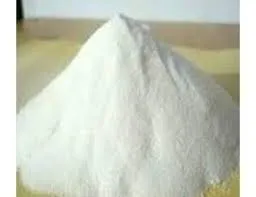
Οκτ . 22, 2024 14:55 Back to list
hydroxypropyl methyl cellulose msds
Understanding Hydroxypropyl Methyl Cellulose (HPMC) Material Safety Data Sheet (MSDS)
Hydroxypropyl methyl cellulose (HPMC) is a cellulose ether commonly used in various industrial and pharmaceutical applications due to its unique properties. An MSDS (Material Safety Data Sheet) for HPMC provides critical information concerning its handling, storage, and potential hazards.
Chemical Identification
HPMC is a white, odorless powder that is soluble in water, forming a viscous gel. It is synthesized by the reaction of alkali cellulose with propylene oxide and methyl chloride. Its chemical formula varies based on the degree of substitution, typically denoted as HPMC K (for viscosity) and HPMC E (for a faster solubility profile).
Hazard Identification
When reviewing the MSDS, the hazard identification section is crucial. Fortunately, HPMC is generally regarded as a low-toxicity compound. However, it may cause mild irritation upon contact with eyes or skin. Inhalation of dust particles can lead to respiratory irritation in sensitive individuals. It is essential to avoid excessive exposure to maintain safety.
Handling and Storage
hydroxypropyl methyl cellulose msds

Safe handling practices are described in the MSDS. Operators should wear appropriate personal protective equipment (PPE), such as gloves and goggles, especially when manipulating the powdered form. HPMC should be stored in a cool, dry place, away from direct sunlight and moisture, to maintain its quality. Containers must be tightly sealed to prevent contamination.
Physical and Chemical Properties
The MSDS outlines key physical and chemical properties of HPMC, including its melting point, solubility in water, and viscosity. These factors are vital for formulators who utilize HPMC in products such as pharmaceuticals, where it acts as a binder, thickener, or stabilizer, and in construction materials, where it improves workability.
Exposure Controls and Personal Protection
For safe use, the MSDS emphasizes the necessity for good ventilation in areas where HPMC is processed. In situations where dust generation may occur, the use of dust masks or respiratory protection is recommended. Eye protection is crucial to prevent irritation, while gloves will safeguard skin from potential contact.
Conclusion
Understanding the MSDS for hydroxypropyl methyl cellulose is essential for anyone involved in its production or application. By comprehensively assessing the information within, users can ensure safe and effective handling, ultimately leading to the successful usage of this versatile compound in various domains, ranging from pharmaceuticals to construction materials. Proper awareness and adherence to safety recommendations safeguard both health and product integrity.
-
Versatile Hpmc Uses in Different Industries
NewsJun.19,2025
-
Redispersible Powder's Role in Enhancing Durability of Construction Products
NewsJun.19,2025
-
Hydroxyethyl Cellulose Applications Driving Green Industrial Processes
NewsJun.19,2025
-
Exploring Different Redispersible Polymer Powder
NewsJun.19,2025
-
Choosing the Right Mortar Bonding Agent
NewsJun.19,2025
-
Applications and Significance of China Hpmc in Modern Industries
NewsJun.19,2025







